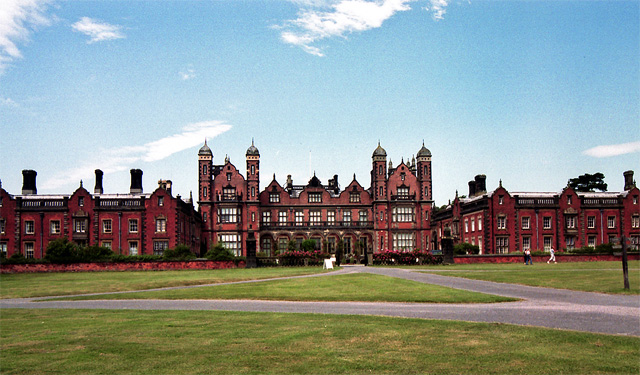Stephen Richards, Capesthorne Hall, Entrance front, CC BY-SA 2.0
One of our most interesting jobs of late took the team to one of Cheshire’s grand country houses – one of no less than 192 in that county!
There has been a large house in the manor of Capesthorne, near the village of Sidlington for more than 630 years, changing hands several times over the centuries and having been extended and altered by various owners.
You know it’s a fine pile of bricks when it can claim to have had an orangery and has its own private chapel. Some of the great names of architecture and design have also been involved at Capesthorne down the years.
Three of the most prominent are Edward Blore, Surveyor of the Fabric of Westminster Abbey, who worked on Lambeth Palace, St James’s Palace, Windsor Castle and completed no less a building than Buckingham Palace.
Then there is Joseph Paxton, the celebrated English gardener, best known for designing the Crystal Palace for the Great Exhibition of 1851 and who was also head gardener at Chatsworth. He replaced the orangery at Capesthorne with a large conservatory.
And finally, Anthony Salvin, famous for his restoration of castles – Alnwick, Durham, Warwick and Windsor and cathedrals including Durham, Norwich and Wells – to name but a few. He also designed Peckforton Castle in Cheshire.
So, it was highly exciting for us to be involved in this collection of buildings’ rich history, even in a small way.
Today the hall, chapel and grounds are privately owned by the Bromley-Davenport family. They are open to the public and are used for special events, including weddings. Like many similar halls they have a programme of events, including for the hall and the grounds, where there is now also a caravan park.
Surrounding the hall are more than 100 acres of woodland, parkland and lakes, as well as gardens which provide popular relaxation breaks for everyone who visits.
As you would expect there is also a café, and it’s also a well-known film location with TV shows, commercials, music videos, product launches, brand experiences and news/press events having used Capesthorne’s facilities.
The site is also used for music events as well as for corporate hospitality and team building events ranging from four-wheel drive, quad biking, clay pigeon, paintball, archery.
Naturally enough with so much activity the owner of the hall wanted some stand out signage for all the visitors the site now attracts and after our initial meeting we were commissioned to design and erect new signage.
We visited the site a number of times to understand exactly what was needed and where and discussed concepts with the client. The signage at that time was very dated and needed a complete revamp. He wanted something clear with their new branding, hardwearing and built to last – centuries even.
The signage in the grounds of the hall had to be designed so that some of them were double sided and could be seen going in as well as when visitors left – that all important message for them on the reverse side to drive safely and thanking them for their visit.
We decided to use 5mm thick solid aluminium ladder sign trays because the signs had to be seen over high hedges from a busy roadside from both directions. The large entrance signs were 3 metres high and were designed so that when car headlights hit them the design and text would still stand out.
Our signs are highly resistant to high impact and abrasion and are impervious to moisture and, very importantly, the manufacturing process and products are environmentally friendly. They have to be because at Nature Sign Design a love of the wealth and wonder of the outdoors is part of our DNA.
The customer was extremely happy with how we met the brief and has commissioned more signage elsewhere in the grounds. We have lots of repeat business from our customers, but we are delighted with this result, because Capesthorne is truly a wonderful and historic place to spend some time.


